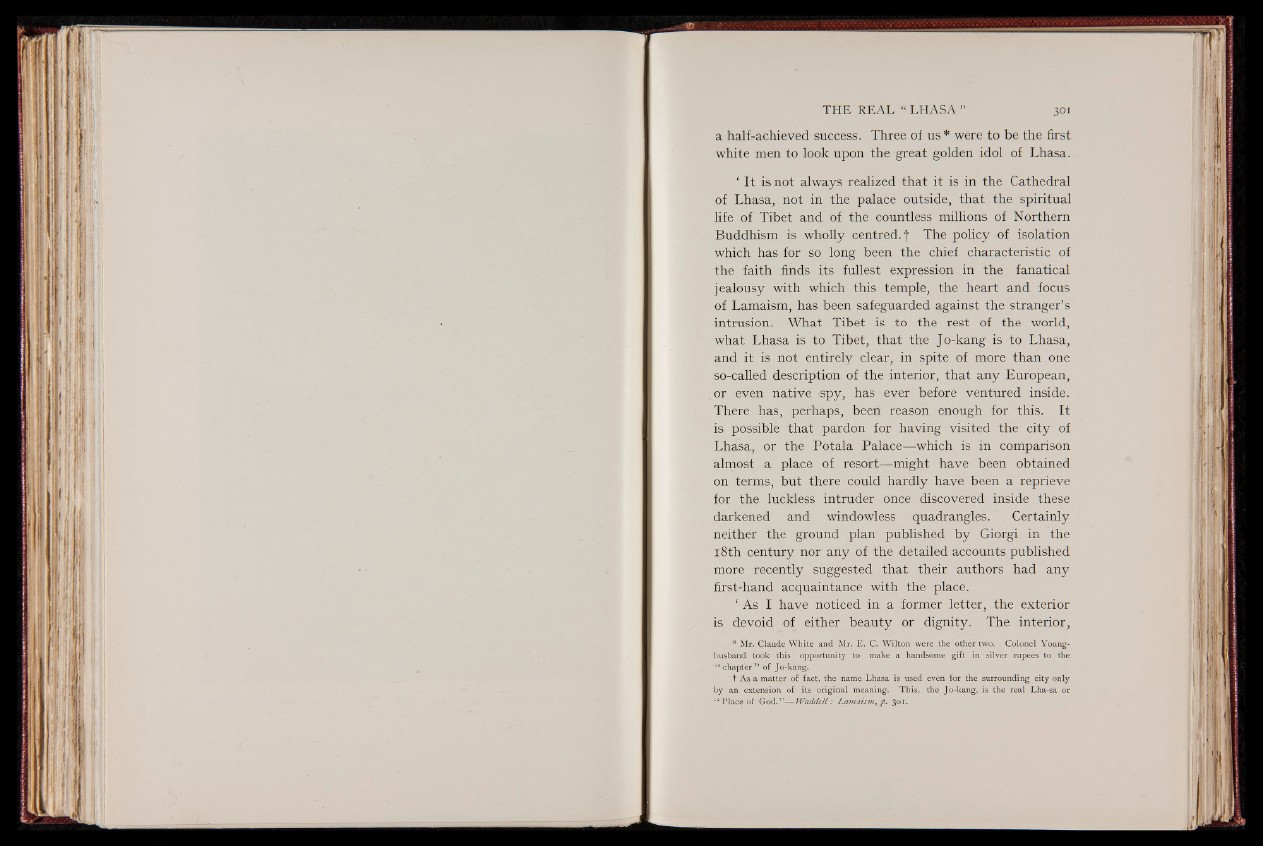
a half-achieved success. Three of us* were to be the first
white men to look upon the great golden idol of Lhasa.
‘ It is not always realized that it is in the Cathedral
of Lhasa, not in the palace outside, that the spiritual
life of Tibet and of the countless millions of Northern
Buddhism is wholly centred, f The policy of isolation
which has for so long been the chief characteristic of
the faith finds its fullest expression in the fanatical
jealousy with which this temple, the heart and focus
of Lamaism, has been safeguarded against the stranger’s
intrusion. What Tibet is to the rest of the world,
what Lhasa is to Tibet, that the Jo-kang is to Lhasa,
and it is not entirely clear, in spite of more than one
so-called description of the interior, that any European,
or even native >spy, has ever before ventured inside.
There has, perhaps, been reason enough for this. It
is possible that pardon for having visited the city of
Lhasa, or the Potala Palace— which is in comparison
almost a place of resort— might have been obtained
on terms, but there could hardly have been a reprieve
for the luckless intruder once discovered inside these
darkened and windowless quadrangles. Certainly
neither the ground plan published by Giorgi in the
18th century nor any of the detailed accounts published
more recently suggested that their authors had any
first-hand acquaintance with the place.
‘ As I have noticed in a former letter, the exterior
is devoid of either beauty or dignity. The interior,
* Mr. Claude White and Mr. E. C. Wilton were the other two. Colonel Young-
husband took this opportunity to make a handsome gift in silver rupees to the
“ chapter ” of Jo-kang.
t As a matter of fact, the name Lhasa is used even for the surrounding city only
by an extension of its original meaning. This, thé Jo-kang, is the real Lha-sa or
“ Place of God.” — Waddell: Lamaism, p . 301.